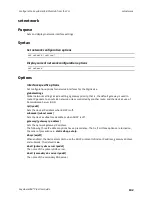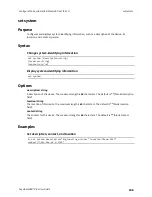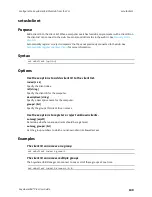
Security
Security-related features in AnywhereUSB® Plus include:
n
Unique password for each Hub. See
.
n
Configurable network service port numbers.
n
Secure access and authentication to the web UI and CLI.
n
One password, one permission level.
n
Selectively enable and disable network services such as mDNS, HTTP/HTTPS, and SSH.
n
Encrypted access to AnywhereUSB® Plus traffic: Access to the USB-over-IP traffic is encrypted
and authenticated by default. This cannot be disabled.
Client ID
The client ID is a unique identifier assigned to a user account the first time a user logs in to a
computer and opens the
AnywhereUSB Manager
. During this process, the
AnywhereUSB Manager
creates a secure identity certificate that is associated with the client ID. This certificate is used to
validate your user account with the Hub.
After a user has created a client ID for their user account, the computer is able to connect to the Hubs
that recognize that client ID.
Create a client ID during initial launch of the AnywhereUSB Manager
The
AnywhereUSB Manager
can be initially opened by a user in one of the following ways:
n
Installation
: When the AnywhereUSB® Plus Hub software is installed, the
Launch
AnywhereUSB Manager
option is selected by default. When the installation completes, the
client ID confirmation dialog appears. The user enters a client ID, and then the
AnywhereUSB
Manager
is automatically opened.
Note
If the user deselects the
Launch AnywhereUSB Manager
option, the
AnywhereUSB
Manager
does not automatically open after the installation process completes. In this case,
the client ID dialog does not display.
n
New user logs in
: After the AnywhereUSB® Plus Hub software is installed, any user can log
into that computer and open the
AnywhereUSB Manager
. The first time a user opens the
AnywhereUSB Manager
, the client ID dialog appears. The user must enter a client ID before
the
AnywhereUSB Manager
will open.
AnywhereUSB® Plus User Guide
155









































